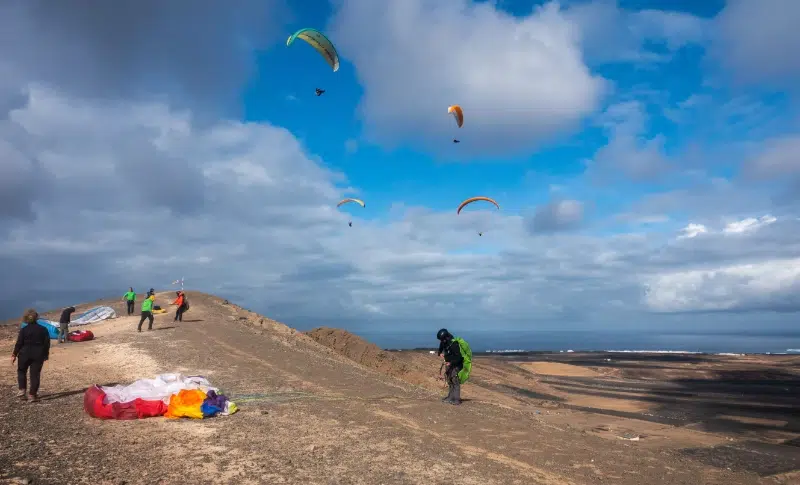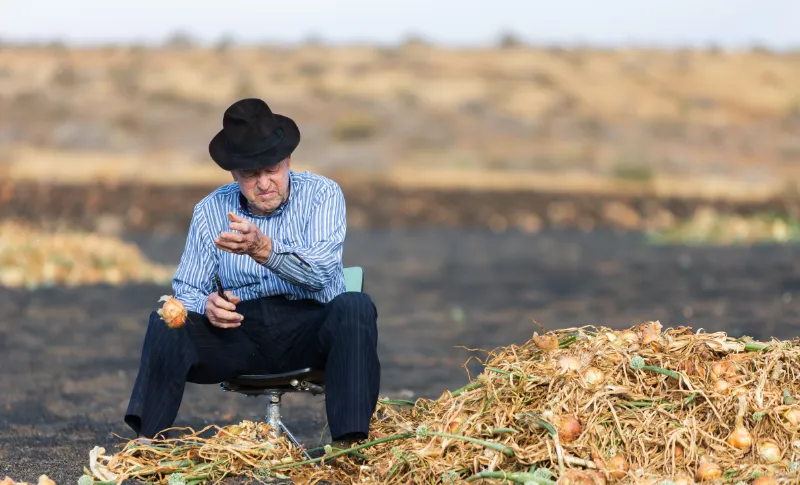
What Grows in Lanzarote: A Taste of the Volcanic Harvest
A Taste of the Volcanic Harvest
Lanzarote, a truly multifaceted island, boasts captivating volcanic landscapes, sandy beaches, cultural heritage, and a distinctive agricultural scene shaped by its harsh, arid conditions. In this article, we’ll delve into the crops flourishing in Lanzarote, showcasing their integral role in the slow food movement, emphasizing local, organic, and sustainable produce.
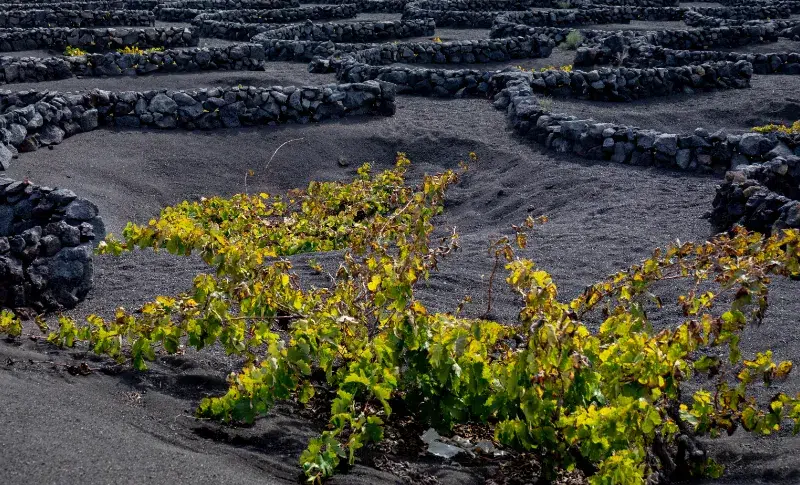
image credit @lanzabubila
Volcanic Wine Excellence
MALVASÍA VOLCÁNICA GRAPE IN LANZAROTE
Renowned for its wine, particularly the white variety derived from the indigenous Malvasía Volcánica grape, Lanzarote boasts a distinct aroma and flavor influenced by the volcanic soil. The vineyards, nestled in circular pits called hoyos, shield the vines from wind and capture precious rainfall. Covered with volcanic ash (picón), these hoyos retain moisture, preventing evaporation. This meticulous process yields a low-yield, high-quality wine, globally recognized for its excellence. Explore Lanzarote’s wine culture by visiting La Geria, the island’s primary wine-producing region.
Figs in Lanzarote
HARVESTING NATURE’S SWEET GEMS
Figs thrive in the island’s more humid northern regions, enjoyed fresh, dried, or transformed into jams, cakes, and liqueurs. Additionally, figs serve as animal feed, contributing to the agricultural ecosystem. Hand-harvested, figs undergo drying either in the sun or specialized ovens.
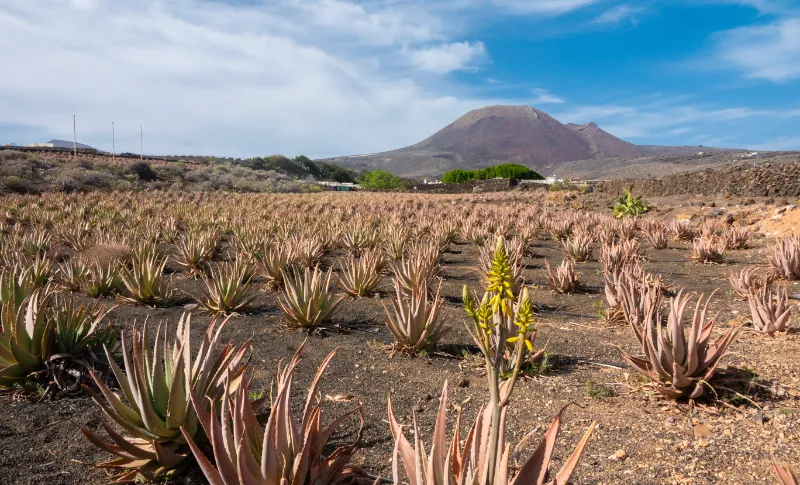
image credit @lanzabubila
Aloe Vera Farming in Lanzarote
UNVEILING MEDICINAL MARVELS
Thriving in Lanzarote since the 16th century, aloe vera is celebrated for its medicinal and cosmetic properties. Rich in vitamins, minerals, antioxidants, and enzymes, aloe vera is utilized in creams, gels, shampoos, soaps, and various products available in local markets. Experience the cultivation and processing of aloe vera by visiting the lanzaloe farms in the north of the island, delving into its history and diverse applications.
Tomato Harvests in Lanzarote
SAVORING THE ISLAND’S CULINARY GEM
Tomatoes play a vital role in Lanzarote’s gastronomy, used in sauces, soups, salads, or simply enjoyed raw with salt and oil. Drip irrigation systems, utilizing recycled water from desalination plants, sustainably cultivate tomatoes. Harvested throughout the year, peak flavor and quality occur between November and March.
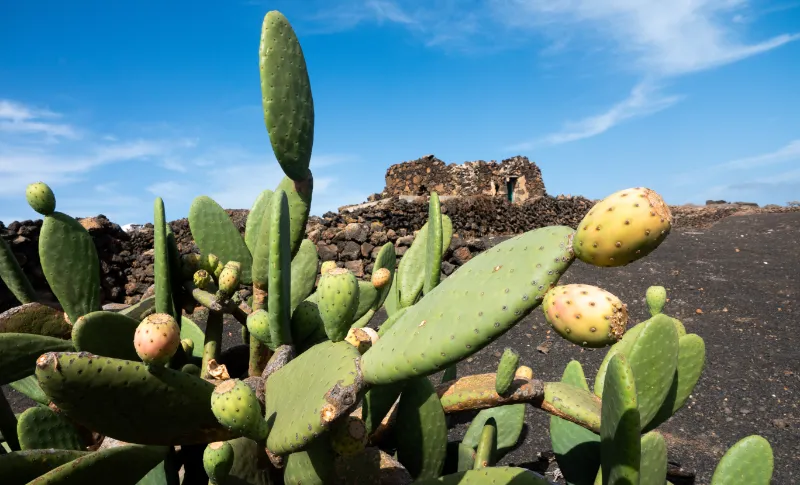
image credit @lanzabubila
Prickly Pear Cactus
EDIBLE TUNOS AND COCHINEAL DYE TRADITION IN LANZAROTE
Introduced by Spanish colonizers in the 15th century, the prickly pear cactus holds historical significance in Lanzarote. Its fruits, tunos, offer a sweet and refreshing taste, consumed raw, cooked, or transformed into jams, juices, and liqueurs. Mama Trina is one of the local producer. Additionally, the cochineal insects residing on the cactus produce a red dye, historically valuable for textile production. While cochineal production has diminished, Lanzarote preserves traditional harvesting and processing methods.
Lanzarote’s Potato Culture
FROM BOILED DELIGHTS TO PAPAS ARRUGADAS
Potatoes, a daily staple, are consumed in various forms—boiled, fried, roasted, or mashed. Papas arrugadas, a local specialty, involves boiling small potatoes with salt to create a thin crust, often served with mojo sauce or cheese. Planting occurs between September and November, with harvests between March and June.
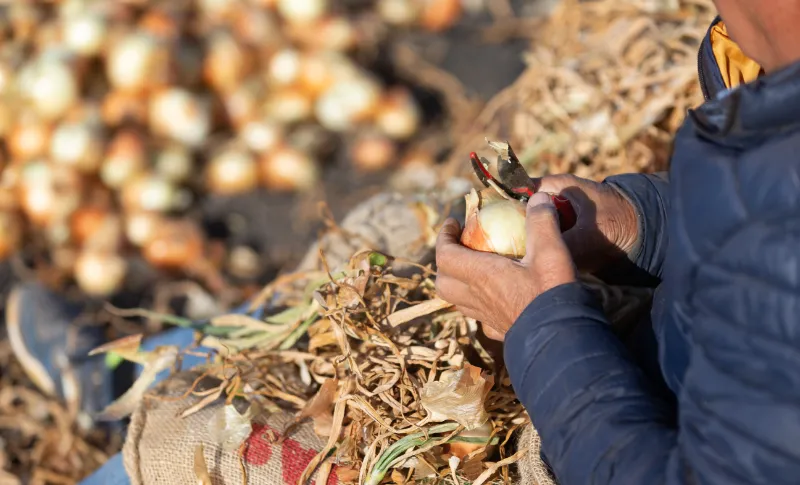
image credit @lanzabubila
Lanzarote’s Onion Bounty
A STAPLE IN LOCAL CUISINE
Onions, a prevalent crop across the island, are a culinary essential in Lanzarote. Featured in dishes like sancocho, ropa vieja, and mojo, onions are also enjoyed raw in salads or as snacks with cheese and bread. Flourishing with minimal water and fertilizer, onions are harvested between May and July, stored in dry, ventilated spaces for future consumption. Find out more by reading the article Onion Cultivation in Lanzarote
Olive Trees in Lanzarote
A GLIMPSE INTO THE ISLAND’S MEDITERRANEAN TOUCH
While not predominant, olive trees, introduced in the 16th century, exist in select groves, primarily in the south and east. Adapting to the challenging conditions, these trees contribute to Lanzarote’s unique agricultural tapestry.
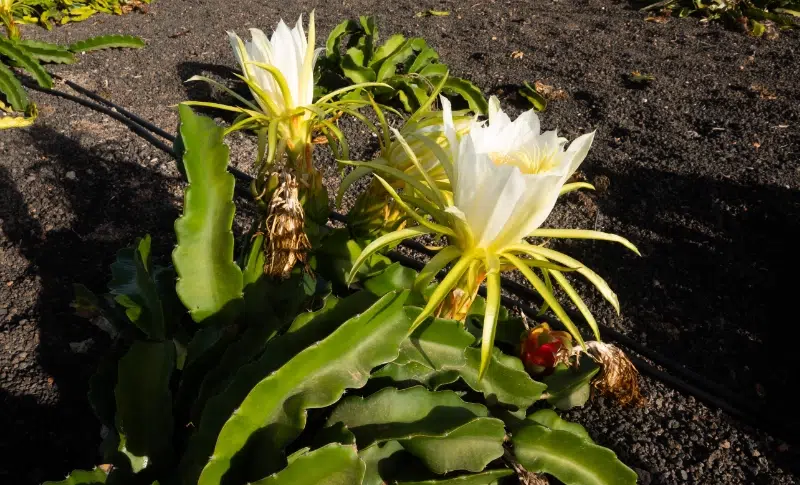
image credit @lanzabubila
Tropical Fruits of Lanzarote
PITAYA, MANGOES, PAPAYAS, AND AVOCADOS
Pitaya
also recognized as dragon fruit, emerges from a cactus and showcases vibrant pink or yellow skin encasing a red or white flesh filled with tiny black seeds. Its taste is a delightful blend reminiscent of kiwi or pear. Pitaya is a nutrient powerhouse, boasting high levels of vitamin C, antioxidants, and fiber. It contributes to reducing blood pressure and cholesterol. Whether consumed fresh, blended into smoothies, or employed as an embellishment in salads and desserts, pitaya adds a sweet and invigorating touch.
Mangoes
a globally cultivated fruit, find their excellence on Lanzarote. The island’s mango varieties are renowned for their succulence, sweetness, and aromatic essence, coupled with a velvety texture. Rich in vitamin A, vitamin C, potassium, and magnesium, mangoes play a role in enhancing the immune system and facilitating digestion. Their versatility extends to being enjoyed fresh, dried, or as components in jams, sauces, and ice creams.
Papayas
thriving in Lanzarote’s tropical climate, boast a yellow-orange exterior and a soft orange interior dotted with black seeds. Possessing a gentle and sweet taste akin to melon or peach, papayas are a low-calorie option, abundant in vitamin C, vitamin A, folate, and digestive enzymes, serving to combat inflammation. Be it fresh consumption, juice extraction, or inclusion in salads and desserts, papayas present a flavorful and healthful choice.
Avocados
despite being technically berries with a sizable seed, feature a green skin enveloping a creamy green flesh with a buttery, nutty flavor. Recognized as one of the healthiest foods, avocados supply beneficial fats, protein, fiber, vitamin E, vitamin K, and folate. Their consumption contributes to cholesterol reduction, skin and hair improvement, and support for cognitive function. Whether eaten fresh, transformed into guacamole, or utilized as a spread or dressing, avocados offer a delectable and wholesome option.
Lanzarote showcases an array of tropical fruits that seamlessly combine delectable taste with nutritional richness. When exploring this island, be sure to savor these fruits, appreciating both their extraordinary flavors and health benefits.
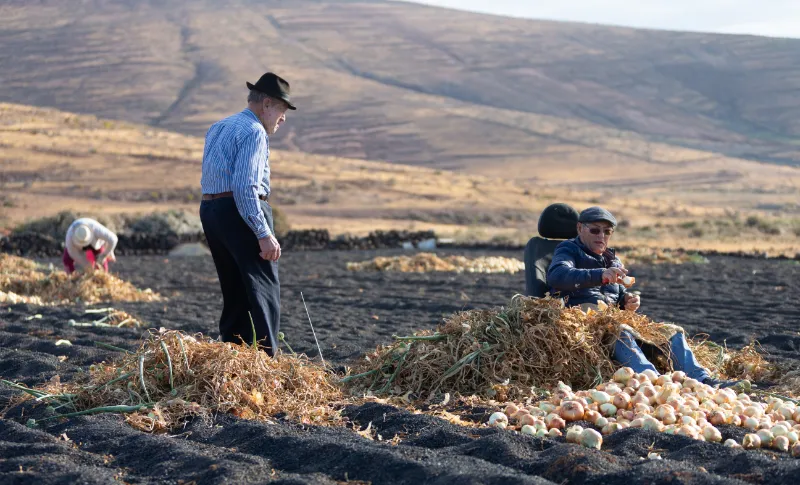
image credit @lanzabubila
Exploring Lanzarote’s Slow Food Movement:
A SUSTAINABLE CULINARY JOURNEY
Beyond its diverse crops, Lanzarote’s agriculture aligns with the Slow Food movement, prioritizing local, organic, and sustainable practices. Embracing traditional techniques, such as hoyos for grapevines, farmers sustainably cultivate a deep connection between the land and its produce. This mindful approach extends beyond the plate, encompassing a lifestyle preserving biodiversity, traditional farming, and celebrating the unique flavors emerging from Lanzarote’s volcanic soils.
Conclusion
Lanzarote’s agricultural richness reflects the adaptability of its people, showcasing a harmonious relationship with the land. Beyond natural beauty, the island’s crops unveil a story of resilience and sustainability. For those eager to delve into Lanzarote’s culture and gastronomy, there’s much to explore, from articles to paragliding flights, each offering a unique perspective on the wonders of this captivating island. Abubila Paragliding stands as your gateway to the marvels of Lanzarote.
recent posts


